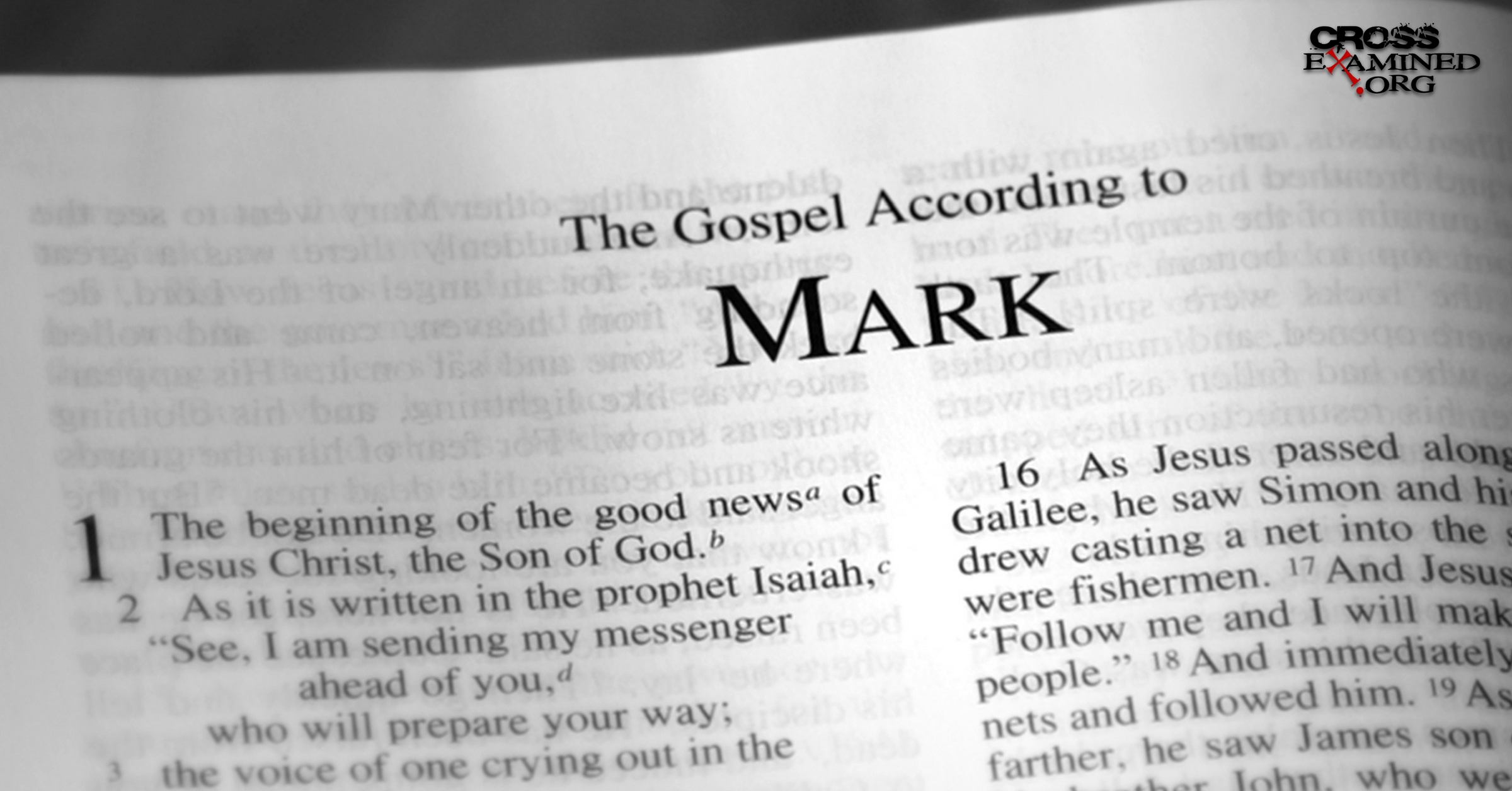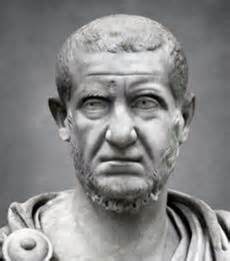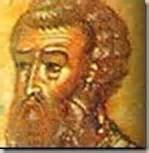Por Brian Chilton
En el curso de las siguientes semanas, discutiremos las razones para aceptar los puntos de vista tradicionales para la autoría del Nuevo Testamento. Hoy comenzaremos con el Evangelio de Mateo y luego nos moveremos hacia los otros tres Evangelios antes de mirar algunas de las cartas en Apocalipsis.
El Nuevo Testamento comienza con el Evangelio de Mateo. Pero ¿qué sabemos del origen del primer evangelio? En un mundo donde la erudición tradicional es a menudo cuestionada y con demasiada frecuencia ignorada, existen varias teorías a las que puede ser el autor del Primer Evangelio. Tradicionalmente, la iglesia ha atribuido el primer evangelio al apóstol conocido como Mateo. Pero ¿qué evidencia encontramos sobre el autor del primer libro del Nuevo Testamento?

Evidencia interna
Cuando discutimos evidencia interna, estamos hablando de la evidencia que encontramos dentro del libro en cuestión. ¿Qué pistas encontramos sobre el autor del primer Evangelio del texto? Al igual que los otros tres Evangelios, el Primer Evangelio es anónimo.
Primero, encontramos que el autor del Primer Evangelio está profundamente arraigado en el judaísmo. El autor a menudo cita la Biblia hebrea (también conocida como el Antiguo Testamento). Él es paralelo a la vida de Jesús con los grandes profetas del judaísmo. Además, hace todo lo posible para demostrar que Jesús es el cumplimiento de la profecía mesiánica. De muchas maneras, el autor del Primer Evangelio se centra en los aspectos judíos de la fe, incluso describiendo algunas áreas como la cláusula de exclusión de Jesús para el divorcio. El escritor del Primer Evangelio también se centra un poco más en los mensajes de Jesús que algunos de los otros escritores del Evangelio.
En segundo lugar, el autor se centra en la obra de Jesús en Galilea y no se centra tanto en el trabajo de Jesús con los gentiles como lo hace Lucas. Por lo tanto, el evangelista se ocupa principalmente del ministerio de Jesús a los judíos.
Finalmente, el autor del Primer Evangelio agrega detalles financieros que sólo se encuentran en el Primer Evangelio. Por ejemplo, sólo el Primer Evangelio registra la incidencia donde los que recaudaron el impuesto del templo “se acercaron a Pedro y le dijeron: ¿No paga tu maestro el impuesto del templo?”(Mateo 17:24)[1]
De todos los detalles considerados con la evidencia interna (uno que es completamente judío en el alcance de los mensajes presentados por Jesús, uno que se centra en el cumplimiento profético de Jesús, uno que se centra en el ministerio de Jesús a los judíos y uno que se centra en materias financieras especialmente en el área de impuestos), Mateo encaja mejor como autor del Primer Evangelio. Mateo era recaudador de impuestos antes de aceptar a Jesús como Salvador y de su papel como apóstol. Por lo tanto, el conocimiento de Mateo de la taquigrafía para tomar notas, así como las finanzas sería muy superior a la mayoría de los demás.
Evidencia externa
Cuando hablamos de evidencia externa, estamos tratando la información que tenemos sobre la autoría de un documento fuera del documento. ¿Qué dicen los demás acerca del autor del Primer Evangelio?
La iglesia primitiva es unánime en su aceptación de Mateo como el escritor del Primer Evangelio. Papías, Ireneo, Panteno y Orígenes relatan a Mateo como el escritor del Primer Evangelio. Papías (c. d.C. 60-130) escribió: “Mateo reunió los oráculos [del Señor] en el idioma hebreo, y cada uno los interpretó como mejor pudo”.[2] Aunque no tenemos una edición hebrea o aramea del Evangelio de Mateo, hay informes de que una pudo haber existido en la iglesia primitiva.[3] No obstante, uno no debe sorprenderse de que Mateo, que necesitaría tener un gran conocimiento del griego en el mundo de los negocios, originalmente escribió su Evangelio en hebreo o arameo, sólo para revisar el Evangelio en griego. Incluso si su Evangelio fue escrito en griego por otro, incluso decir un amanuense,[4] esto no negaría la autoría de Mateo. Craig Evans recientemente grabó un video en el que afirma que Mateo pudo haber surgido en fases.[5]
Panteno también confirmó que Mateo fue el autor del Primer Evangelio. El gran historiador de la iglesia, Eusebio de Cesárea, escribe que Panteno, un líder de la iglesia a finales del siglo 2 o posiblemente a principios del siglo III, se encontró con la versión hebrea del Evangelio de Mateo. Eusebio señala que Panteno fue “un hombre muy distinguido por su aprendizaje, encargado de la escuela de los fieles en Alejandría”.[6] Lo que sigue es el informe de Eusebio sobre el encuentro de Panteno con la edición hebrea del Evangelio de Mateo:
Se ha informado de que entre las personas que conocían a Cristo, encontró el Evangelio según Mateo, que había anticipado su propia llegada. Porque Bartolomé, uno de los apóstoles, les había predicado y les había dejado la escritura de Mateo en lengua hebrea, la cual habían conservado hasta entonces.[7]
Con la adición de Orígenes y la aceptación de Ireneo de Mateo como escritor el Primer Evangelio, uno está muy presionado para desestimar sus afirmaciones.
Además, los eruditos reconocen que el nombre de Mateo fue asociado con el primer evangelio de los tiempos más tempranos. Los escritores de la CSB Study Bible denotan que “el título que atribuye este Evangelio a Mateo aparece en los primeros manuscritos y es posiblemente original. Los títulos se hicieron necesarios para distinguir un Evangelio de otro cuando los cuatro Evangelios empezaron a circular como una sola colección”.[8]
Fecha y lugar de escritura
Ciertamente es razonable aceptar que Mateo fue escrito en los años 50 debido a la asunción comprensible de que los Hechos fueron terminados antes del año 64 d.C., con Lucas apareciendo antes de Hechos y Mateo escribiendo su Evangelio antes de Lucas. Los eruditos generalmente sostienen que Mateo compuso su Evangelio en o alrededor de Antioquía de Siria.
Conclusión
Algunos pueden argumentar que un discípulo como Mateo no pediría prestado material de Marcos, si, de hecho, es cierto que Mateo tomó prestado material del Evangelio de Marcos. Sin embargo, cuando uno considera que Mateo siguió a Jesús mucho después que la mayoría de los apóstoles, y que Mateo no era un discípulo del círculo interno; entonces es lógico que Mateo tomara prestado material del Evangelio de Marcos si, es cierto, que Marcos transmitió información de Simón Pedro, quien era tanto uno de los primeros apóstoles como un discípulo del círculo interno.
Aunque algunos todavía no están de acuerdo, me parece extraño atribuir el Primer Evangelio a Mateo de todas las personas, especialmente cuando el Primer Evangelio fue utilizado como manual de la iglesia en muchos casos. Mateo era recaudador de impuestos. Los recaudadores de impuestos se mantuvieron en una estimación ligeramente superior a la escoria del estanque… pero no por mucho. Entonces, ¿por qué atribuir el Primer Evangelio a un recaudador de impuestos a menos que haya al menos algún mérito para la reclamación?
En mi humilde opinión, creo que el Primer Evangelio vino a nosotros en tres fases. Primero, el apóstol Mateo escribió las enseñanzas de Jesús en arameo. Entonces, Mateo añadió los milagros y hechos de Jesús a su edición aramea y / o hebrea de su Evangelio añadiendo su testimonio de testigos oculares y el testimonio de Simón Pedro como se encuentra en el Evangelio de Marcos. Finalmente, ya sea Mateo o un escribano altamente entrenado tradujo el Evangelio al griego.
Notas
[1] A menos que se indique lo contrario, todas las Escrituras citadas provienen de la Christian Standard Bible (Nashville: Holman, 2017).
[2] Papías, “Fragments de Papías”, en The Apostolic Fathers with Justin Martyr and Irenaeus, ed. Alexander Roberts, James Donaldson y A. Cleveland Coxe, vol. 1, The Ante-Nicene Fathers (Buffalo, NY: Christian Literature Company, 1885), 155.
[3] Creo que es Jerónimo quien reporta haber visto un Evangelio hebreo de Mateo. ¿Pero es esto lo mismo? No podemos saberlo con seguridad.
[4] Es decir, un escribano que escribe las palabras que se dictan a sí mismo. A algunos amanuenses se les dio libertad para agregar sus propias expresiones a un grado.
[5] Video grabado para Faith Life. No pude encontrar el enlace. Voy a publicar el enlace si soy capaz de encontrarlo.
[6] Eusebio de Cesárea, “The Church History of Eusebius,” en Eusebius: Church History, Life of Constantine the Great, and Oration in Praise of Constantine, ed. Philip Schaff y Henry Wace, trans. Arthur Cushman McGiffert, vol. 1, A Select Library of the Nicene and Post-Nicene Fathers of the Christian Church, Second Series (New York: Christian Literature Company, 1890), 224.
[7] Ibid., 225.
[8] “Introduction to Matthew,” CSB Study Bible (Nashville: Holman, 2017), 1494.
Brian G. Chilton es el fundador de BellatorChristi.com y es el presentador de The Bellator Christi Podcast. Recibió su Maestría en Divinidad en Liberty University (con alta distinción); su Licenciatura en Ciencias en Estudios Religiosos y Filosofía de la Universidad Gardner-Webb (con honores); y recibió la certificación en Christian Apologetics (Apologética cristiana) de la Universidad de Biola. Brian actualmente está inscrito en el programa Ph.D. en Teología y apologética en Liberty University. Brian ha estado en el ministerio por más de 15 años y sirve como pastor en el noroeste de Carolina del Norte.
Blog Original: http://bit.ly/2mMVEOA
Traducido y editado por Jairo Izquierdo














